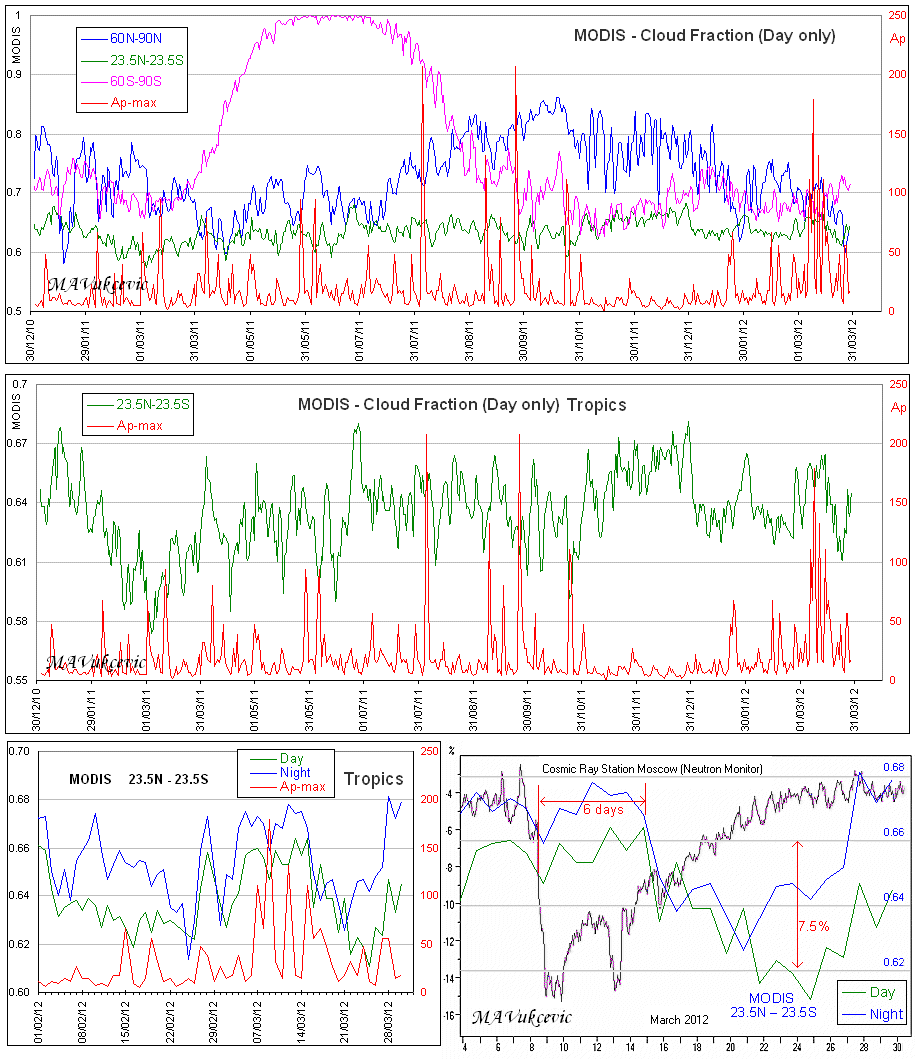S V E N S M A R K C O N F I R M E D ?

Close passages of coronal mass ejections from the sun are
signaled at the Earth's surface by Forbush decreases in cosmic ray counts. We
find that low clouds contain less liquid water following Forbush decreases,
and for the most influential events the liquid water in the oceanic
atmosphere can diminish by as much as 7%. Cloud water content as gauged by
the Special Sensor Microwave/Imager (SSM/I) reaches a minimum ≈7 days after
the Forbush minimum in cosmic rays, and so does the fraction of low clouds
seen by the Moderate Resolution Imaging Spectroradiometer (MODIS) and in the
International Satellite Cloud Climate Project (ISCCP).
http://www.agu.org/pubs/crossref/2009/2009GL038429.shtml
Effect from the Forbush decrease lasts only few days and would not have much effect. Clouds reduction in day-time increases insolation, but at the night time effect on temperatures is reversed due to more cooling, the net result on the '24hour day' temperature scale could be minimal. Note: cloudiness at night is 2-5% higher than at the day time.
Data: http://www.vukcevic.co.uk/data.txt
Ap max - http://www.solen.info/solar/indices.html
Cloud fraction - http://gdata1.sci.gsfc.nasa.gov/daac-bin/G3/gui.cgi?instance_id=MODIS_DAILY_L3
GCR count - http://cr0.izmiran.rssi.ru/mosc/main.htm